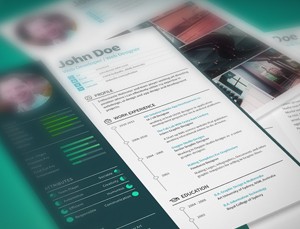Whether due to retrenchment, resignation, or reasons, such as illness, pregnancy, or incarceration, returning to the workforce will always be an uphill climb. Further, it’s a hard but possible feat. This guide on how to make a potent resume will help you win job interviews almost half the battle.
A Brief Introduction
First, before you learn how to make a potent resume, refresh your know-how.
What’s a resume?
A resume is a document that sums up your work skills, experience, and accomplishments, so your target employer can check whether you’re perfect for the position or not.
What does a resume look like?
Although resumes don’t look the same, their appearance follows a few general guidelines. Likewise, most employers prefer they fit one side of a page. In addition, they should appear professional with no colored paper or fancy fonts.
What goes in a resume?
In general, a resume has several sections such as:
- Name and contact information
- Objective or summary statement
- Work experience
- Skills
- Education
- Volunteer and extracurricular experience
How to Make a Potent Resume
Below is a step-by-step guide to writing each section of your resume. Then again, it includes the contents and a handful of tips on how to boost your job application, too.
STEP 1: RESUME FORMAT
The three main resume formats are chronological, functional, and combination. Moreover, your work history and intended job define what style you should use.
Chronological Resumes
The reverse chronological resume displays your work experience details from the newest (most relevant) to the oldest (least relevant). In the same way, it allows you to sell yourself by stressing your promotions and upward career mobility. Hence, it’s perfect for entry to mid-level job seekers who aim to boost their careers.
This format will work best for you if you:
– want to show a vertical career progression.
– want to apply in a similar field.
– have few work experience gaps.
Functional Resumes
The functional format, on the one hand, promotes you through your skills and abilities that are most relevant to the job post. Unlike the first format, the functional form excludes when and where you learned or performed those skills. Thus, by using this format, you can achieve three huge goals.
- Offer evidence you’re a strong candidate for the job.
- Downplay employment gaps if you stopped working for a time.
- Help hiring managers find the specific skills required for your target job in a jiffy.
This format will work best for you if you:
– have large unusual gaps in your employment history.
– are in the midst of a big career change.
– want to promote a specific skill set.
Combination Resumes
The combination resume format blends the first two formats. Likewise, it often begins with a professional profile or a summary of qualifications that includes skills, abilities, and achievements related to the job opening. (This section forms the functional part.)
After this portion, your professional experience, education, and other sections follow, from the newest to the oldest data. (This section forms the chronological part.)
This format will work best for you if you:
– want to showcase a relevant and well-developed skill set.
– want to move to a different industry.
– are an expert at what you do.
STEP 2: CONTACT INFORMATION
Regardless of the resume format you’ll choose, your contact information goes at the top of your resume. Hence, here’s what you must include under this part.
Name
Your name should stand out and appear at the topmost part of your resume. In particular, you can make the fonts bold and/or make them larger than other words in your copy.
Contact Number
Make sure your phone has a voicemail feature so hiring managers can leave a message when you’re not available. The voicemail message, in particular, must include your name and must sound professional, so employers know they’re contacting the right person.
Email Address
Use a personal, yet professional email address that includes your first and last name. Likewise, with this in mind, always check your account, so you can respond to employer inquiries in a prompt manner.
Social Media Account Web Address (optional)
No matter what platform you’re using, always make sure employers will find you online, and you passed the eye test to prove you’re a good person. Besides, employers prefer LinkedIn profiles because they serve as your extended resume.
Web Addresses of Personal Websites, Blogs, and Portfolios (optional)
Likewise, you can add the web addresses of your website, blog, or portfolio if you sensed they’re relevant to the job.
STEP 3: SUMMARY STATEMENT
Further, every great resume starts with a strong summary statement. A short description of who you are as a professional, it includes a brief list of your most relevant skills. Your summary statement must be short but effective and not over three sentences or bullet points. It must show:
- Your professional title
- Your top 2-3 skills
- Your specific abilities, professional traits, and notable accomplishments
STEP 4: TOP RELEVANT SKILLS
This section includes top skills relevant to your target job. Although short and concise, it has vital info on your ability to do the work; thus, this part must be visible to target employers. Below are a few writing tips to help you stand out.
Match skills to the job requirements.
Further, read the job description and list the skills needed for the position, required and desired skills alike. Next, check if you have skills that match those on the job post. Further, those that match are the ones you should include under the skills section. Hence, when hiring managers skim your resume, they’ll see you have the skills they need in an applicant.
Include transferable skills.
Transferable skills are those that intersect from one career field to another and relate to a variety of positions, which include:
- Communication
- Presentation or Public Speaking
- Any Foreign Language
- Social Media
- Organizational and Planning
- Leadership and Management
Use keywords.
If the employer asked you to upload your resume or fill in an application form online, chances are you’re placing your information into an application tracking system (ATS). Moreover, most companies use such software to scan resumes for keywords specific to the vacant job. Use keywords from the job description and industry and include them in your resume to get past this stage. Besides, adding keywords straight from the employer’s job post increases your hiring chances.
STEP 5: WORK EXPERIENCE AND ACHIEVEMENTS
This part is where you’ll discuss your direct experience and accomplishments; hence, it’s crucial to get this one right. When you write this section, apply these tactics:
- Write your job history in reverse chronological order beginning with your most recent position.
- Under each position, include a few bullet points describing the range of your responsibilities in that job.
- Tailor each bullet point to mirror the skills listed in the employer’s job post.
- Follow the bullet-point format and include facts and figures.
- Add achievements and craft a narrative that echoes the persona you introduced in your resume summary or objective.
STEP 6: EDUCATION
This section can be a crucial part of your resume, too. Likewise, even if you don’t have an earlier experience, you may increase your hiring chances if you can show you’ve finished courses relevant to your target job.
Same with the work experience section, list your degrees in reverse chronological order with the most recent one appearing first. Therefore, account your education in this order:
- Degree or diploma name
- Major(s)
- Minor(s) (list them if they’re only relevant to your target job)
- Year graduated or expected year of graduation
NOTE: Don’t include your grade point average (GPA) unless you’re a recent graduate.
Guide on How to Make a Potent Resume
Aside from being professional and polished, your resume needs to stand out, too, if you don’t want it to end up in the “rejected” pile. Likewise, read below a few pointers on how to make a potent resume for your great job comeback.
1. Make it legible.
In addition, your resume should be easy to read if you want the hiring manager to learn and absorb what’s in it. To do this:
- Use a readable font (e.g. Calibri, Times New Roman, Arial, and Verdana).
- Make sure the font size is just right (pick a size between 10 and 12).
- Leave enough white space on the page to make it scannable.
- Avoid dense blocks of texts and use standard margins.
- Use only white or cream-colored paper.
2. Be consistent.
Make sure you have a consistent resume format. This applies to font style and size and bullet points.
3. Keep your resume focused.
Your resume should focus on your relevant traits and skills that will qualify you for your target job. In addition, avoid adding extraneous info such as personal details (age, gender, hobbies, and place and date of birth) and references unless the hiring manager asks for them.
4. Use free resume samples and templates.
You can use online resume templates and samples as guide or pattern for formatting, but make sure you customize your copy before you send it to recruiters.
5. Proofread your resume.
Check your resume, with much care, for glaring errors. Besides, you can even ask help from your family and friends or use spelling and grammar checkers online to do a thorough proofreading.
6. Get resume help.
Yet, if you want greater chances of getting interview invitations, you may skip this tutorial on how to make a potent resume and hire professional resume writing services instead.
Resume Prime caters to a wide range of job seekers. Call us at 1 (888) 846-9272 to know more about our offers.
Sources: bigfuture.collegeboard.org |
www.wikihow.com | www.thebalance.com




